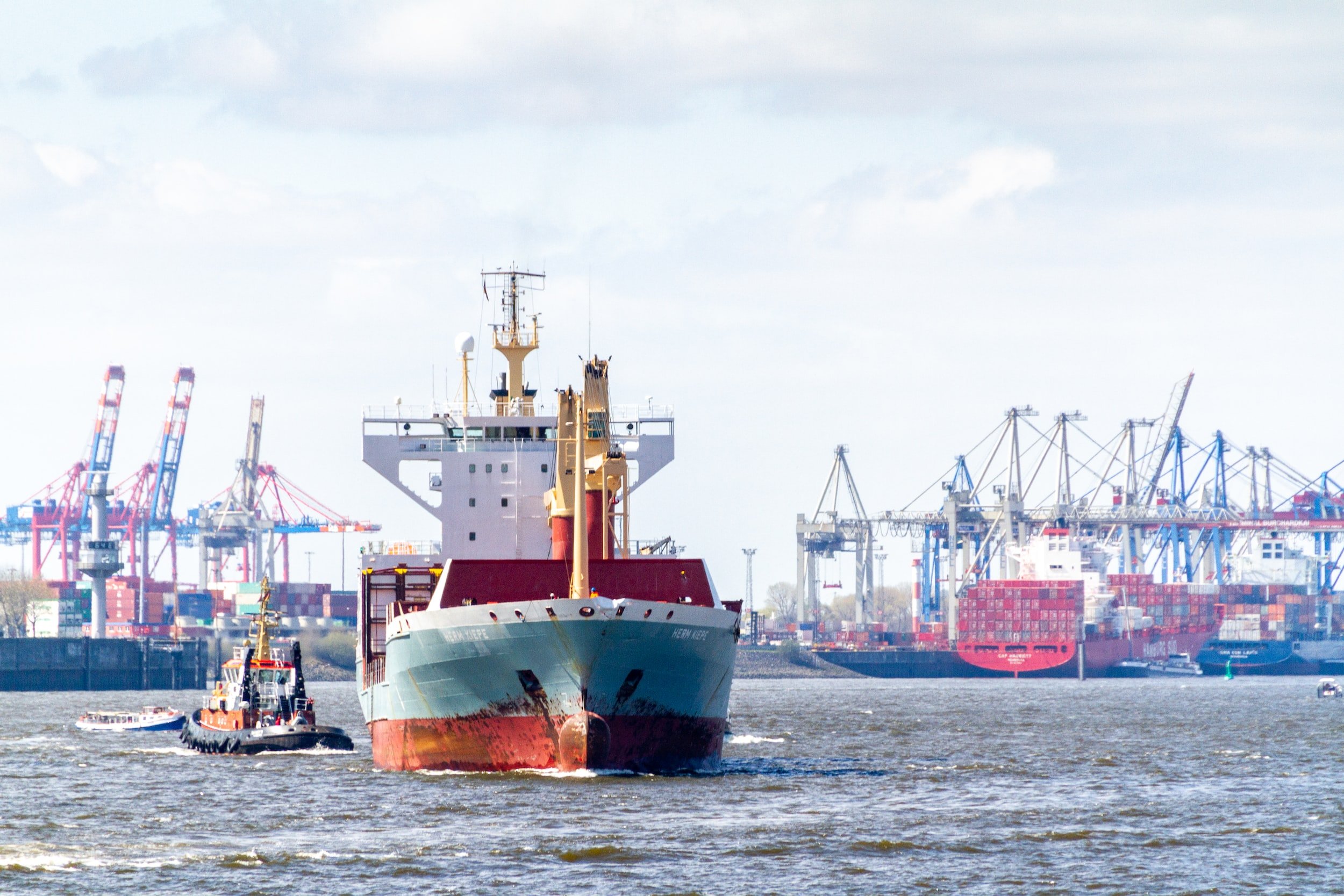ocean plastic: cleaning ports
Ports and marinas act like magnets for waste, whether ballast water or engine waste from large merchant ships, gear lost or discarded by fishers, chemicals or oil accidentally spilled, or plastic carried there by currents bringing waste downriver. The shipping industry underpins the global economy and the sheer scale of marine traffic seen in the main ports around the world is astounding. Shanghai, the largest port in the world, saw 43.5 million containers pass through it in 2020. With such high levels of traffic, ports inevitably become hotspots of waste and while some of the cleanup solutions used to clean rivers can also be deployed in these enclosed areas, more innovative ideas are needed specifically for ports.
Steps are being taken to improve the environmental performance of ports, as can be seen by the vast array of environmental projects highlighted on the website of the World Ports Sustainability Program. Port authorities have recognized that a waste-free port not only limits damage to the vessels visiting them and harm to the marine life prevalent there, it is also an integral part of the path towards sustainability.
One of the main challenges with ports and marinas is their high level of traffic. Fixed structures like booms impede movement and therefore cannot be used but a number of the skimmer vessels seen on the cleaning rivers page can also be deployed in these areas. In addition, solutions such as mobile waste traps and autonomous vessels are being put to use.

Dimitry Anikin/Unsplash

Nick Karvounis/Unsplash

Vidar Nordli-Mathisen/Unsplash

Ma He/Unsplash
Spotlight on the Seabin Project
According to their website, the Seabin Project began with a simple idea: "if we can have rubbish bins on land then why not have them in the ocean?" By installing floating bins in a port or marina area, the surface of the water can be skimmed by pumping water into the device and catching floating debris (from macroplastics to microfibres) in a filter and even removing oil and fuel from the water. The Seabin Project team has developed a concept to clean the ports of at least 100 cities by 2050, working in partnership with Yamaha Rightwaters.
The pilot project was set up in Sydney in 2020. 20 seabins have been installed across the harbour, their goal is to remove 28 tonnes of microplastics, marine litter and plastic fibres a year by filtering 4.3 billion litres of water. The Seabin Project Team collect data from the bins to add to their pollution database, which enables them to monitor the health of the waterways and provide key information to inform decision-making by local governments. Sydney is just the beginning: Seabin plan to offer a package of data monitoring, impact reporting, identification of causes of pollution, community awareness programs and marine debris removal to cities all around the world with the #100 Cities campaign, as outlined in this film:
Spotlight on Clear rivers
Another project in use in ports is the passive Litter Trap of Clear rivers, an installation made of recycled plastic which collects trash channelled towards the device by wind and river currents. After a development phase in cooperation with the Audi Environmental Foundation, and a successful test phase in the harbour basin of Brussels where 1.5 cubic meters of waste were collected each month, litter traps have now been deployed in Malaysia and Indonesia.
Spotlight on Clean Sea Solutions
Clean Sea Solutions, a Norwegian startup, is currently testing a two-fold approach to plastic debris, one using a storage system embedded in floating docks, the other using drones to collect waste.
According to their website, the Aquapod is a fixed structure embedded in a floating jetty with an integrated system for collecting and storing marine plastic waste in marinas and other waterfront areas. The pump system creates a waterfall inside the pod, attracting plastic waste from the surface down into a net, where the waste is trapped and can be removed easily. Capable of filtering 100 cubic metres an hour, the system has a storage capacity of 700 litres of plastic waste. When connected to the network, monitoring, webcam, and SMS notification is triggered when the internal unit needs to be emptied. The pod can be integrated into already existing floating docks and units, such as kayak jetties or pontoons.
The Aqua Drone 1 is a fully electric and autonomous drone, which uses a combination of computer vision and remote sensing to remove waste in ports, canals and estuaries. The catamaran is fitted with a collection unit and a self-emptying system that, when full, triggers its return to the docking station where it can deposit the collected plastic into a waste retention area and recharge. Aqua Drone 1 can also be set up to conduct bathymetric surveys as it cleans. The drone can operate independently or be controlled using a Vehicle Control Station, allowing control over the course and speed of the drone. The pilot phase of the project is currently ongoing in the port of Oslo.
Spotlight on Clear Blue Sea
Using similar technology to that used on skimmer vessels, the Floating Robot Eliminating Debris (FRED) by Clear Blue Sea, is a solar-powered, semi-autonomous catamaran capable of collecting waste from 5 mm to 5 metres in length in calm waters. The waste is carried up a conveyor belt into the storage bins which, when full, are offloaded, emptied, and the waste processed for recycling. Clear Blue Sea aim for FRED to be built by anyone or any organization interested in tackling waste in their marine environment and plan to produce a FRED which can be scaled up for deployment anywhere whether on rivers, in bays, near coasts, or on the open ocean.
